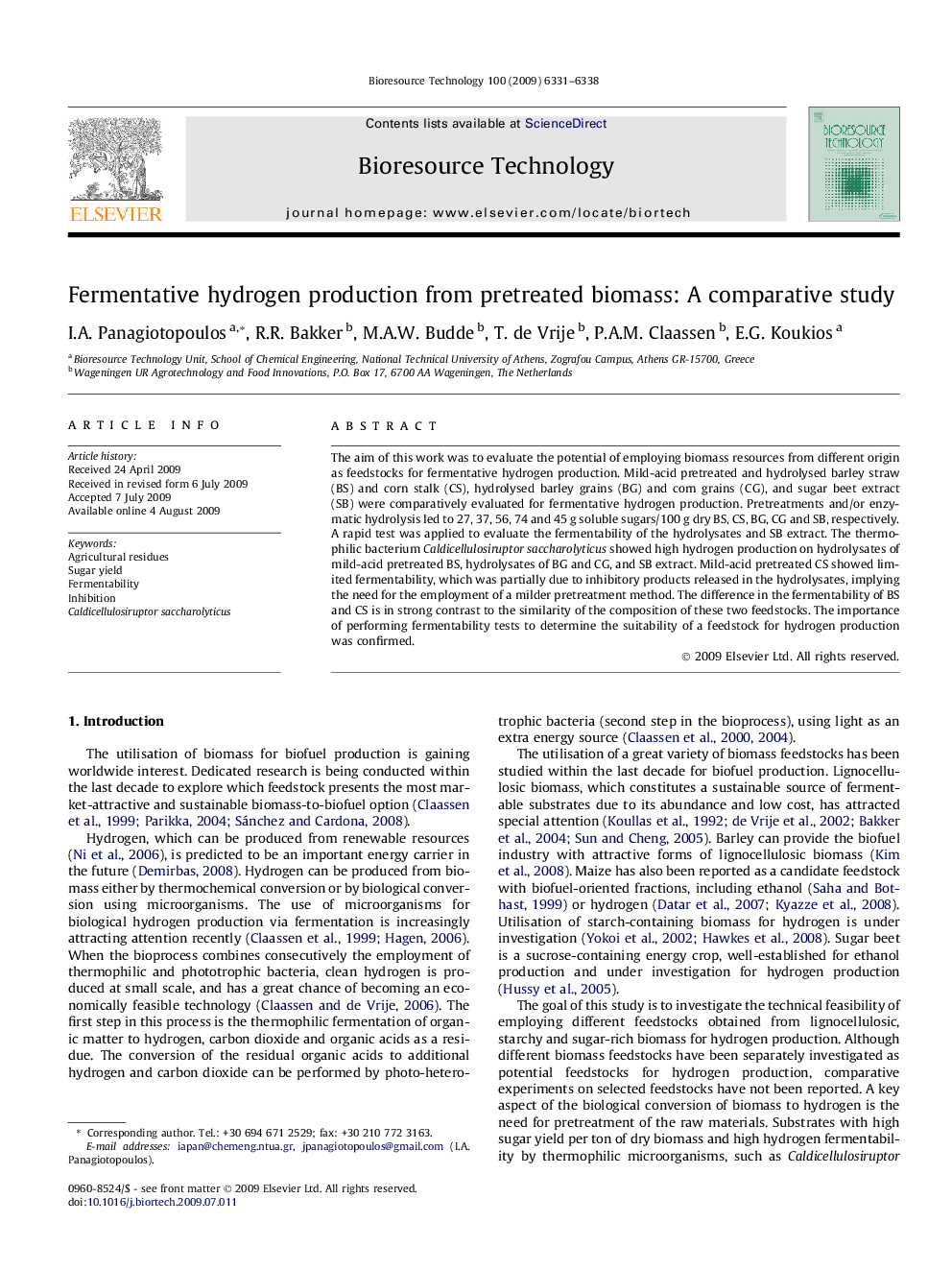| Article ID | Journal | Published Year | Pages | File Type |
|---|---|---|---|---|
| 683435 | Bioresource Technology | 2009 | 8 Pages |
The aim of this work was to evaluate the potential of employing biomass resources from different origin as feedstocks for fermentative hydrogen production. Mild-acid pretreated and hydrolysed barley straw (BS) and corn stalk (CS), hydrolysed barley grains (BG) and corn grains (CG), and sugar beet extract (SB) were comparatively evaluated for fermentative hydrogen production. Pretreatments and/or enzymatic hydrolysis led to 27, 37, 56, 74 and 45 g soluble sugars/100 g dry BS, CS, BG, CG and SB, respectively. A rapid test was applied to evaluate the fermentability of the hydrolysates and SB extract. The thermophilic bacterium Caldicellulosiruptor saccharolyticus showed high hydrogen production on hydrolysates of mild-acid pretreated BS, hydrolysates of BG and CG, and SB extract. Mild-acid pretreated CS showed limited fermentability, which was partially due to inhibitory products released in the hydrolysates, implying the need for the employment of a milder pretreatment method. The difference in the fermentability of BS and CS is in strong contrast to the similarity of the composition of these two feedstocks. The importance of performing fermentability tests to determine the suitability of a feedstock for hydrogen production was confirmed.
